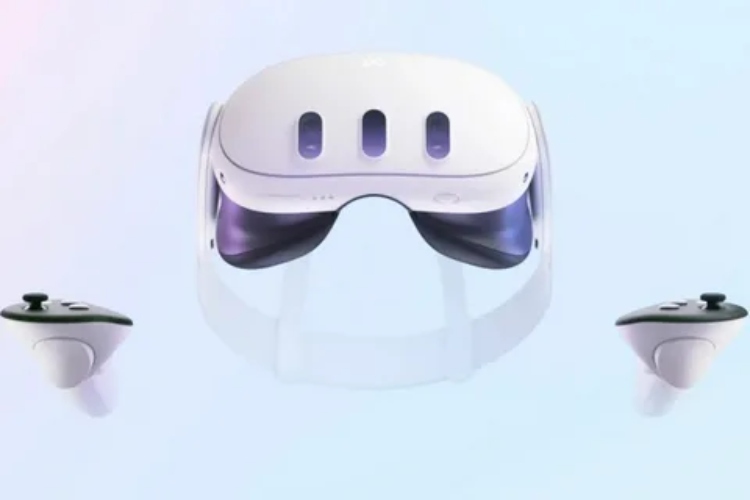Introduction:
The world of augmented reality (AR) and virtual reality (VR) has seen tremendous growth and innovation in recent years. Two major players, Meta and Apple, have taken center stage with their latest offerings – the Meta Quest 3 and the Apple Vision Pro. Both headsets have generated significant buzz and excitement, setting the stage for a clash of titans in the AR/VR landscape. In this article, we will delve into the features, capabilities, and potential impact of these devices, as well as examine how they stack up against each other.
Meta Quest 3: Pushing the Boundaries of VR Meta, formerly known as Facebook Reality Labs, has been at the forefront of VR technology with its Oculus brand. The Meta Quest 3 represents the latest iteration of their popular standalone VR headset. One of the key selling points of the Meta Quest 3 is its untethered design, allowing users to experience VR without being tied to a PC or gaming console. The device boasts a powerful processor and improved display resolution, resulting in a highly immersive and visually stunning experience.
Furthermore, the Meta Quest 3 features inside-out tracking, eliminating the need for external sensors. This provides users with greater freedom of movement and makes the setup process significantly easier. With a vast library of games and applications available on the Oculus platform, the Meta Quest 3 offers a diverse range of experiences for both gaming enthusiasts and casual users alike.
Apple Vision Pro: The Integration of AR and VR Apple, known for its innovation in consumer electronics, has entered the AR/VR market with its Vision Pro headset. Combining both augmented and virtual reality capabilities, the Vision Pro aims to redefine how we interact with digital content. The headset is rumored to feature high-resolution displays, advanced sensors, and a sleek design – characteristics that align with Apple’s commitment to user experience and aesthetics.
Where the Vision Pro truly sets itself apart is in its integration with Apple’s ecosystem. Leveraging the power of the Apple ecosystem, including devices like iPhones and iPads, the Vision Pro is expected to seamlessly blend the digital and physical worlds. Users can potentially leverage AR features in everyday tasks, such as navigation, communication, and productivity, creating a more immersive and interconnected experience.
Head-to-Head: Meta Quest 3 vs Apple Vision Pro When comparing the Meta Quest 3 and the Apple Vision Pro, it is important to consider several factors:
- Ecosystem Integration: Apple’s Vision Pro has a distinct advantage here, thanks to its integration with the Apple ecosystem. With a large user base and a wide range of applications and services, Apple has the potential to offer a seamless AR/VR experience across multiple devices.
- Immersion and Performance: The Meta Quest 3’s untethered design and powerful hardware make it a strong contender in terms of immersion and performance. With a focus on gaming and a robust content library, it delivers an exceptional VR experience.
- Design and Comfort: While design details of the Vision Pro are still largely speculative, Apple’s track record suggests a focus on sleekness and comfort. The Meta Quest 3, on the other hand, has undergone iterative improvements in terms of comfort, making it a comfortable choice for extended VR sessions.
- Developer Community: Both Meta and Apple have dedicated developer communities, but Meta’s Oculus platform has a head start in terms of content and game development. However, Apple’s extensive developer network could quickly close the gap, given the company’s influence and reach.
Conclusion:
The clash between the Meta Quest 3 and the Apple Vision Pro represents a significant milestone in the AR/VR landscape. While the Meta Quest 3 excels in immersive gaming experiences and offers a mature content ecosystem.





